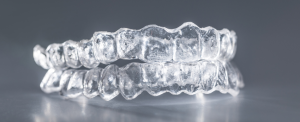In the oral health panorama, periodontal diseases and caries represent not only a significant burden in terms of public health, but also a considerable economic impact. According to a recent report prepared by “Economist Impact” in collaboration with the “European Federation of Periodontics (EFP)”, the treatment of periodontitis and cavities constitutes approximately 4.9% of global health spending. These data underline the urgent need to address these conditions to improve the oral health of the population and a key factor is digital dentistry.

The analysis reveals that the costs associated with the care and prevention of caries amount to 357 billion dollars per year, which represents the aforementioned 4.9% of global health expenditure. In addition, productivity losses resulting from caries, severe periodontitis and tooth loss reach approximately 188 billion dollars per year.
It is important to keep in mind that oral diseases affect almost half of the world’s population, overcoming the burden of the most common non-communicable diseases (NCDs). The figures speak for themselves: more than two billion people are affected by dental caries worldwide, and more than a billion suffer from serious gum disease. This reality underlines the urgent need to take measures.
In this context, digital dentistry emerges as a fundamental tool in the prevention and treatment of periodontitis and caries. Technologies such as intraoral scanners and 3D conical beam x-rays (CBCT) provide a thorough evaluation of the bone structure and soft tissues, allowing the early detection of incipient caries and periodontal defects before they progress. The use of specialized software allows professionals to simulate various treatment options and accurately visualize the expected results, thus improving communication with patients and facilitating informed decision-making.
In addition, digital technologies such as lasers and CAD/CAM milling machines are revolutionizing oral treatments. Lasers allow less invasive periodontal treatments with reduced recovery times, while CAD/CAM milling machines allow the creation of personalized dental restorations with exceptional precision.
3D printing and other digital technologies optimize the efficiency and precision in dental procedures, which translates into a faster and more accurate manufacture of prostheses, restorations and splints, thus improving the quality of care and reducing the costs associated with treatment.
In addition, digital dentistry facilitates continuous monitoring of the patient over time. Through the use of analysis software, professionals can evaluate the effectiveness of the treatment and make personalized adjustments as needed, thus contributing to optimal long-term results.
Today, digital dentistry represents a significant advance in prevention and treatment. Its impact on public health and the economy is undeniable, and its increasingly widespread adoption promises to improve the quality of life of the population around the world.



